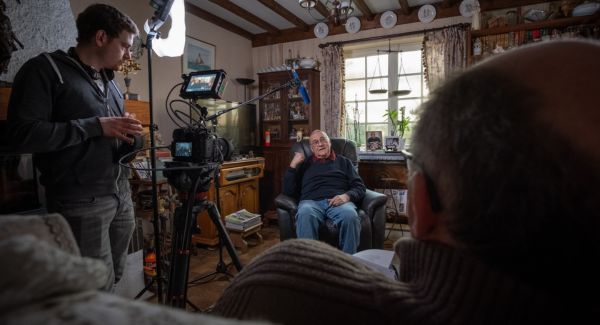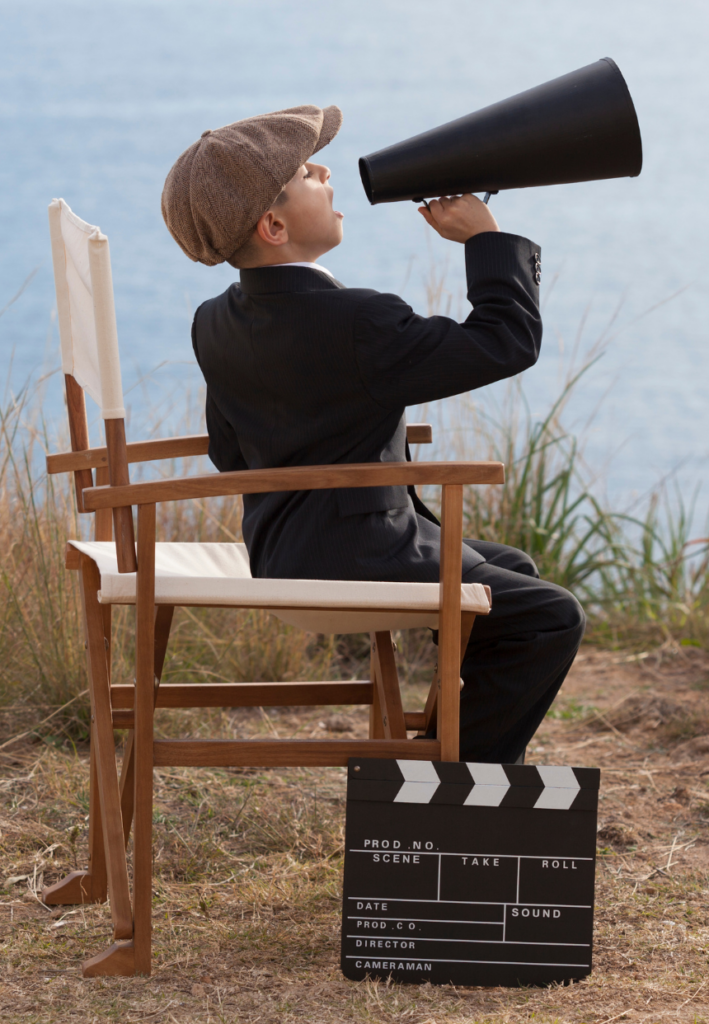How to use the screenwriter’s definition of a story to create a good story structure for your documentary
by Carole Dean
Karen Everett is one of the world’s leading documentary story consultants. Her company, New Doc Editing, has pioneered ways to tailor screenwriting principles to non-fiction films. She has helped filmmakers structure captivating documentaries for PBS, HBO, Sundance, and other top film festivals.

On my recent podcast, The Art of Film Funding, I asked Karen what is a good story structure?
A Character Driven Documentary
Karen said she follows a screenwriter’s definition of story. A good story is normally about someone who wants something badly and that something is difficult to get. And in this world, we call this a character driven documentary with a three-act structure, a beginning, a middle and an end.
In act one, we meet the protagonist and learn something that throws their world upside down into chaos. That’s called the catalyst, or the inciting incident.
What comes out of their desire is their quest, it is the story we’re telling. Karen says it is important to include in your script narration or in an interview what she calls “a protagonist statement of desire.” This is where the protagonist says in one or two sentences exactly what they want. This should be punctuated with sound effects or music to guide the viewer to the narrative arc.
Tips from Aristotle
Karen notes we use the three-act structure from Aristotle, which has been used in all kinds of art forms. We are adapting it for a nonfiction format.
The protagonist’s desire should be something important like finding a cure for Alzheimer’s. This first act is where you introduce me to your characters and begin your character development. This act one is 25% of the film.
The second act’s focus is on how difficult it will be to achieve the goal and we see many obstacles in their way. This is where a lot of drama happens, and it is about 60% of the film.
In The shortest act, which is act three where the protagonist either reaches or does not reach his objective.
Plot Driven Vs. an Idea Driven
That structure adopted from Aristotle is a plot driven documentary as opposed to an idea driven. This idea driven film is an essay style documentary. People often start those by posing a thesis statement.
This type of documentary was radical 20 years ago. Karen mentioned An Inconvenient Truth as an example. That was Al Gore’s hypothesis, and he spent most of the film proving it. For this type of film, you start with a thesis statement. Then, through most of the film, you’re finding arguments to bolster your notion.
At the end of the film, you say now we’ve proven it. This film could also start with a central question like who killed the electric car? This gives us several culprits who were all behind the killing of the electric car, General Motors or was it the battery technology or was it the executives or the consumers? You have those questions to answer yourself at the end of the film.
You should feel that you’ve learned something purposeful from this type of documentary.
A Paper Edit
In idea driven films, many people make a paper edit. Karen says she likes to have at least a one-page outline that identifies the central question or the central thesis. It then lists the ways that we’re going to examine this thesis, this idea.
At the end, we have meaning so the viewer walks away with a sense of “Oh, I’ve not only learned something, but I’ve also learned something useful.”
Karen explains once you have that list of plot points; let’s say you have four items that are obstacles and the protagonist is facing, you look at those closely and say, ‘I have a lot of ideas, so which plot point best relates to this idea?’
Now, use the plot points as a springboard for opening a discussion among the characters or the experts on an idea that you want to explore in a character driven documentary.
How to Start the Opening of a Documentary Story
I asked Karen to tell us how they start the opening of a story. I find this is most important to grantors and to viewers. Where do you begin? She replied, “Yes, the opening is so important you should be trying at least a dozen different openings.
Personally, I believe it’s the most difficult part of a documentary to edit. I’ve heard people say that. So here are a few things to keep in mind for the first 20 seconds:
- Make sure you’re using sound and video that looks and sounds stellar. You must have high production values because research shows that the first thing the audience notices is not what the film is about but how it’s made. And they will make judgments immediately if the footage is dark or the composition is wobbly or even more important than video the audio is scratchy. Do not start with this type of material unless it is highly compelling.
- You need to hook the viewer in the first 20 seconds. You might use a crazy image. You might pick a bit of a conversation or start with humor. The thing that works most of the time is to come up with three or four very good one sentence sound bites that are emotional, like, how could they let them do that? And use a voiceover or a related music theme. You need something that captures the theme of the film. What works well here are superlatives, meaning the first or the best. Like, what was the first surgeon general to recommend we stop smoking. It’s just a statement from an interview somewhere that you put at the beginning. And when you have four or five of those, they can build on each other. So how could they let this happen? This could follow that statement and it generates two things. One is a sense of excitement about the conversation, and two, we began to get an understanding of the content of the film.
- And certainly, by two minutes the viewer should basically have a sense of what the film is about. Establish the film storytelling grammar. In the first two minutes you want to reveal a few of these and by seven minutes you should ideally get those off the ground so that the viewer has a sense that this is not only an interesting film, but it’s artistic, it’s cohesive, it’s using a recurring motif.
- Once you have introduced all of this within the first 7 minutes, you use these different looks and sounds periodically throughout the film.
Free e-book “Documentary Editing”
Karen Everett is offering a free e-book on documentary editing which is filled with 27 chapters that include:
- Organizing Folders and Sequences
- Launching and Editing a Character-Driven Documentary
- Pacing With A Doc Plot Map
- Editing An Essay-Style Documentary
- Editing Trailers, Sizzle Reels, and Fundraising Samples
- Multiple Protagonists and Subplots
“With an insider’s love and knowledge of documentary form, Karen Everett takes us into the beating heart of documentary filmmaking. Filled with useful references and possible scenarios, her book ‘Documentary Editing’ will be of enormous help to those of us who have sat in front of our unmade films and wondered how the hell we were going to move forward.” Robb Moss, Harvard Film Professor
Click here to get your copy.
Carole Dean is president and founder of From the Heart Productions; a 501(c)3 non- profit that offers the Roy W. Dean Film Grants and fiscal sponsorship for independent filmmakers.
profit that offers the Roy W. Dean Film Grants and fiscal sponsorship for independent filmmakers.
She is creator and instructor of Learn Producing: The Ultimate Course for Indie Film Production. 26 classes which will teach indie filmmakers how to produce their films.
She hosts the weekly podcast, The Art of Film Funding, interviewing those involved in all aspects of indie film production. She is also the author of The Art of Film Funding, 2nd Edition: Alternative Financing Concepts. See IMDB for producing credits

